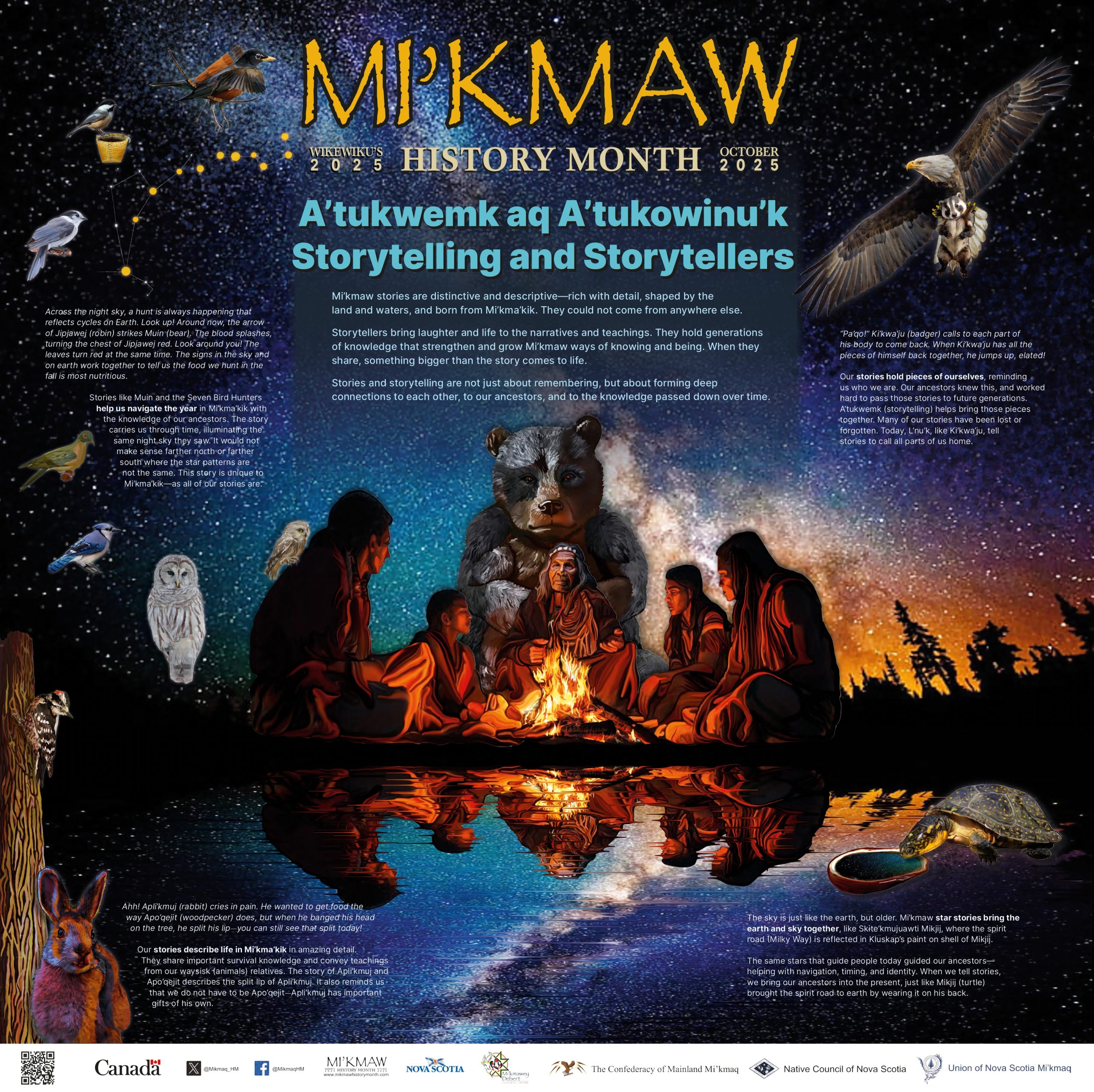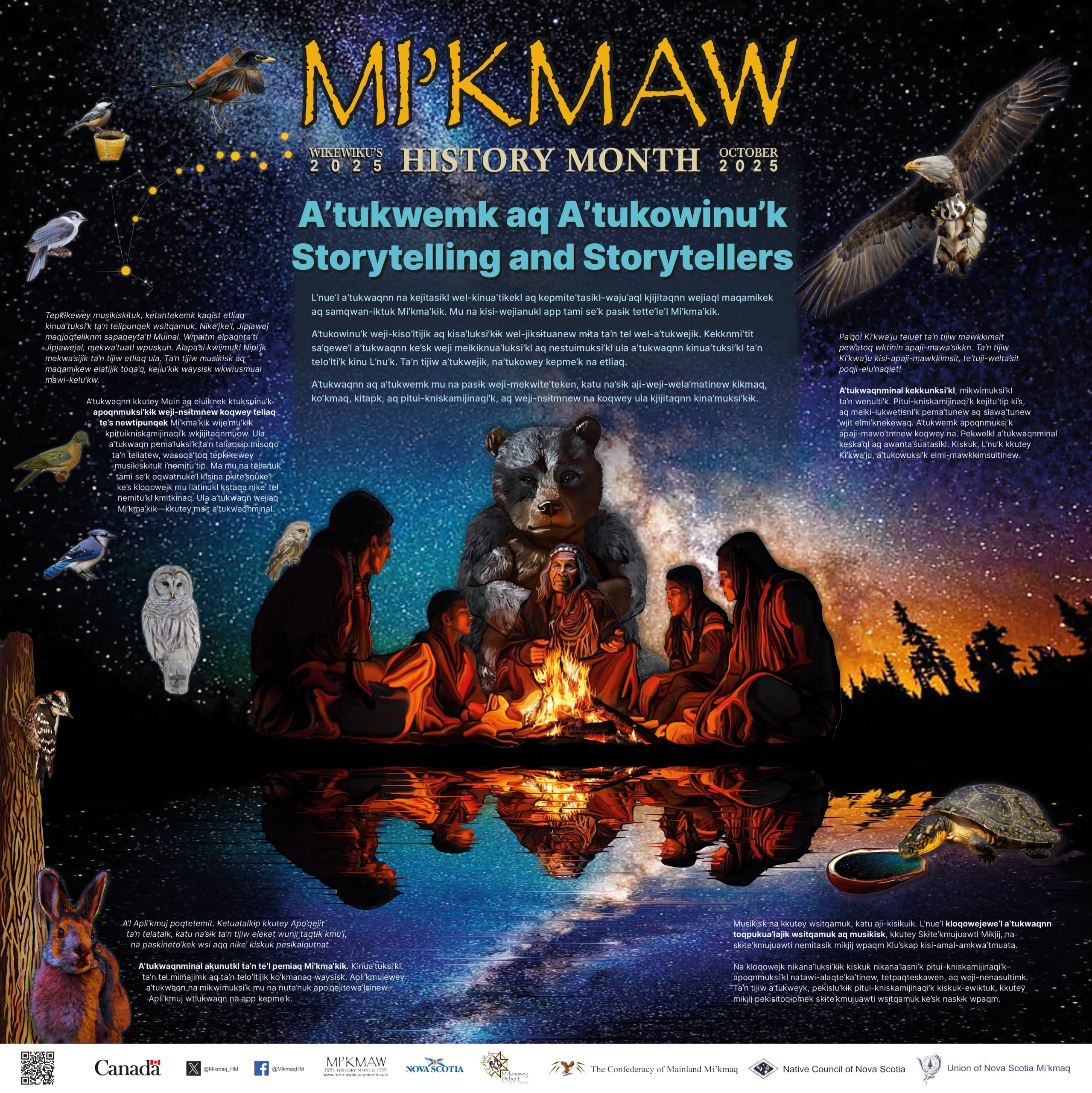September 30th, the National Day for Truth and Reconciliation (NDTR), asks us to pause and remember the children who never came home, the Survivors, and the ongoing impact of residential schools. The very next day, October 1st, Treaty Day in Nova Scotia, reminds us of the living treaties between the Mi’kmaq and the Crown, and opens Mi’kmaq History Month, a time to learn from Mi’kmaw history and celebrate Mi’kmaw culture.
October is also National Disability Employment Awareness Month (NDEAM). NDEAM is recognized across Canada as a time to highlight the contributions of persons with disabilities and to advance disability inclusion in the workplace. Close to 2 in 5 Nova Scotians live with a disability, and making workplaces fully accessible is essential to our collective success.
Taken together, these observances invite us to move within each world. In Mi’kma’ki, that means honouring treaties, centring Mi’kmaw worldviews, and advancing disability inclusion. It means seeing the deep connections between reconciliation and accessibility. Both are about equity, dignity, and the right to contribute one’s gifts.
Beyond the Word “Disability”
In Mi’kmaq, there is no word for “disabled” and this is a reflection of a worldview. Each person is seen as unique, carrying gifts to share with the world. Elder Albert Marshall from Eskasoni First Nation teaches that to know one’s gift and to share it is a part of one’s responsibility. Ensuring spaces that enable people to share their gifts are part workplace responsibility through culture building and creating spaces of belonging so everyone has the opportunity to grow and to shine.
This perspective stands in sharp contrast to colonial systems, where people often must identify as “disabled” to qualify for support programs or accommodations. For Indigenous people, this means navigating what is often referred to as “having a foot in two worlds.” On one side are community teachings that emphasize gifts, balance, responsibility, and a sense of belonging to community and the world. On the other are colonial structures that often rely on medicalized, deficit-based definitions of disability, though that is changing.
Decolonization and Accessibility: Shared Principles
Decolonization in Canada involves dismantling settler-colonial systems and supporting Indigenous self-determination — reclaiming culture, land, language, and governance. Accessibility focuses on removing barriers for people with disabilities so that they can participate fully in society.
At their heart, these two efforts share core values:
- Equity and inclusion over exclusion.
- Challenging power imbalances rather than accepting the status quo.
- Self-determination and dignity for each person.
For Indigenous people, who, by colonial definition identify as having a disability , these issues are deeply connected. They often face multiple barriers at once — barriers of colonization, racism, sexism, and ableism. Too often, systems force them to navigate processes and definitions that erase culture and voice.
As we mark NDEAM alongside Mi’kmaq History Month, it is important to see how decolonization and accessibility reinforce each other. Together, they open a path toward workplaces where every employee can thrive.
What Employers in Nova Scotia Can Learn
- Recognize Self-Determination
Accessibility is not about doing things for people but is rather about creating conditions where people can make their own choices. For Indigenous employees with disabilities, this includes space to define their own identities and needs, without being forced into colonial categories.
Employers can:
- Ask employees how they wish to identify and what support they need.
- Respect autonomy and avoid prescriptive labels.
- Co-create accommodations that uphold dignity and choice.
This aligns directly with the goals of NDEAM: to recognize contributions and empower workers by giving them real choice.
- Commit to Culturally Safe and Trauma-Informed Practices
While improving the built environment is important, workplace accessibility is not only about the physical, it is also social, cultural, and emotional.
Employers can:
- Provide Indigenous-led cultural safety and trauma-informed training for all staff.
- Build supports for cultural practices such as ceremony, guidance from Elders, or land-based healing.
- Ensure workplace wellness programs respect holistic health; mind, body, spirit, and community.
Mi’kmaw knowledge teaches us that well-being is interconnected. Respecting that worldview strengthens not just individuals but entire workplaces.
- Rethink Employment and Economic Access
Employment can be a powerful driver of equity. Yet people with disabilities often face unique barriers: rigid hiring processes, loss of benefits when they earn income, or lack of accessible transportation in rural areas.
Employers can:
- Offer flexibility in hiring, such as providing interview questions in advance, alternative formats, or allowing a support person.
- Ensure jobs pay a living wage and do not penalize employees by cutting off support once they start working.
- Consider rural realities including transportation and scheduling when designing jobs.
These steps echo the spirit of NDEAM: removing systemic barriers so that all Nova Scotians and Canadians alike can contribute fully.
- Embed Indigenous Worldviews in Accessibility Planning
Accessibility is often defined by Western systems that focus on productivity or economic value. A decolonized approach recognizes community, responsibility, and diverse gifts.
Employers can:
- Apply universal design principles through an Indigenous and gender lens.
- Create advisory circles or employee groups that give decision-making power to Indigenous employees and gender-diverse employees with disabilities.
- Recognize that accessibility extends across physical, digital, cultural, and governance spaces.
Embedding Indigenous worldviews makes accessibility plans stronger and more holistic.
Why This Matters Now
The Truth and Reconciliation Commission’s Call to Action #20 urges governments to address the distinct health needs of Indigenous people, including those living with disabilities. But reconciliation is not only the work of governments. It is the responsibility of employers, organizations, and communities.
By aligning NDTR, Treaty Day, Mi’kmaq History Month, and NDEAM, we see the bigger picture. Accessibility and reconciliation are not separate. They are shared responsibilities that call us to action now.
A Call to Employers
As an employer in Nova Scotia, ask yourself:
- How are we listening to Indigenous voices in shaping accessibility in our workplace?
- Do our policies reflect dignity, autonomy, and choice?
- Are we creating space for diverse gifts to be recognized and shared?
- Are we aligning with NDEAM by celebrating the contributions of employees with disabilities this month?
This October, you can act. Join national and provincial NDEAM activities. Use #DEAM2025 and #LightItUpForNDEAM to share stories. Partner with Mi’kmaw organizations to co-design inclusive recruitment and retention strategies.
Closing Reflection: Weaving of Two Worldviews
Decolonization and accessibility are not separate conversations. They are threads woven together in the fabric of reconciliation and inclusion, drawing on both Indigenous and Western ways of knowing. It means honouring treaty relationships and advancing accessibility with dignity and respect. It means ensuring that all people — Indigenous, non-Indigenous, disabled, and non-disabled — can share their gifts at work.
As we move through Mi’kmaq History Month and National Disability Employment Awareness Month, let us commit to workplaces where reconciliation and accessibility are lived every day. In doing so, we create stronger teams, healthier communities, and a future where everyone has the opportunity to contribute, feel valued and live a fulfilling life.
Sources
- Canadian Charter of Rights and Freedoms, s. 15, Part I of the Constitution Act, 1982.
- Government of Canada (2019). Accessible Canada Act.
- Marshall, A. (2009). Etuaptmumk/Two-Eyed Seeing: The gift of multiple perspectives in scholarship.
- Native Women’s Association of Canada (2018). Accessibility and disability for Indigenous women, girls, and gender diverse people.
- Truth and Reconciliation Commission of Canada (2015). Calls to Action.
- United Nations (2007). Declaration on the Rights of Indigenous Peoples.
- United Nations (2006). Convention on the Rights of Persons with Disabilities.
- CASE (2025). Disability Employment Awareness Month Resources.
- Accessibility Directorate of Nova Scotia (2025). Awareness Events: Light It Up for NDEAM
- CASE (2025). True Allyship Supports Indigenous Workers Experiencing Disability.

Image Description: The Mi’kmaw History Month 2025 Poster with an image of Mi’kmaw people gathered around a fire with a bear in the background and a starry night sky above them.

Image Description: The Mi’kmaw History Month 2025 Poster with an image of Mi’kmaw people gathered around a fire with a bear in the background and a starry night sky above them.
